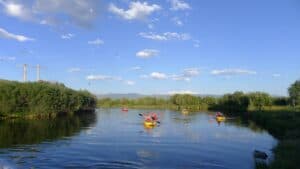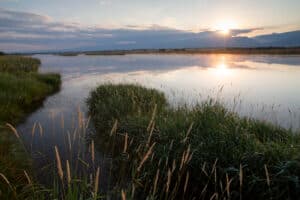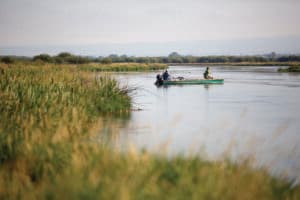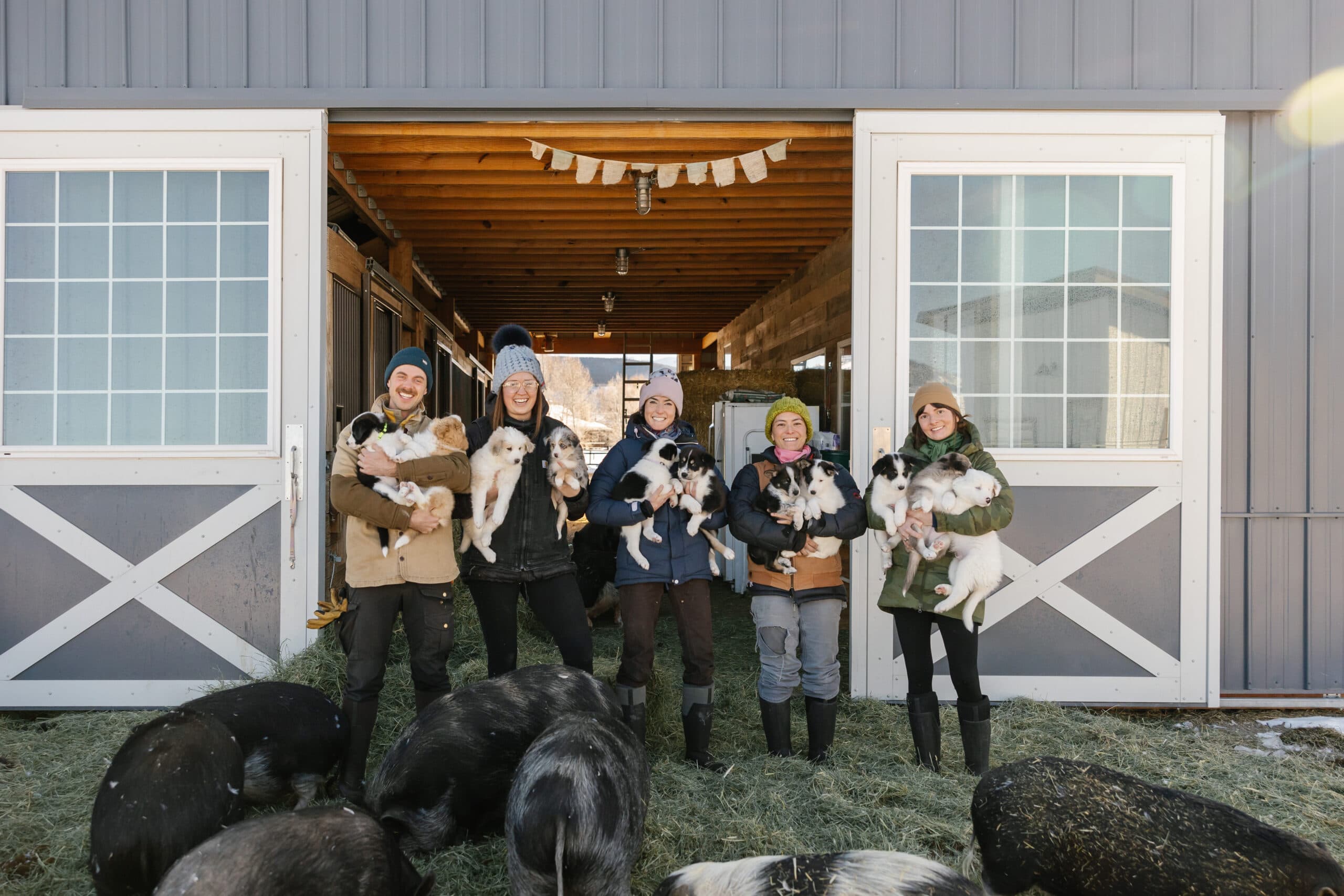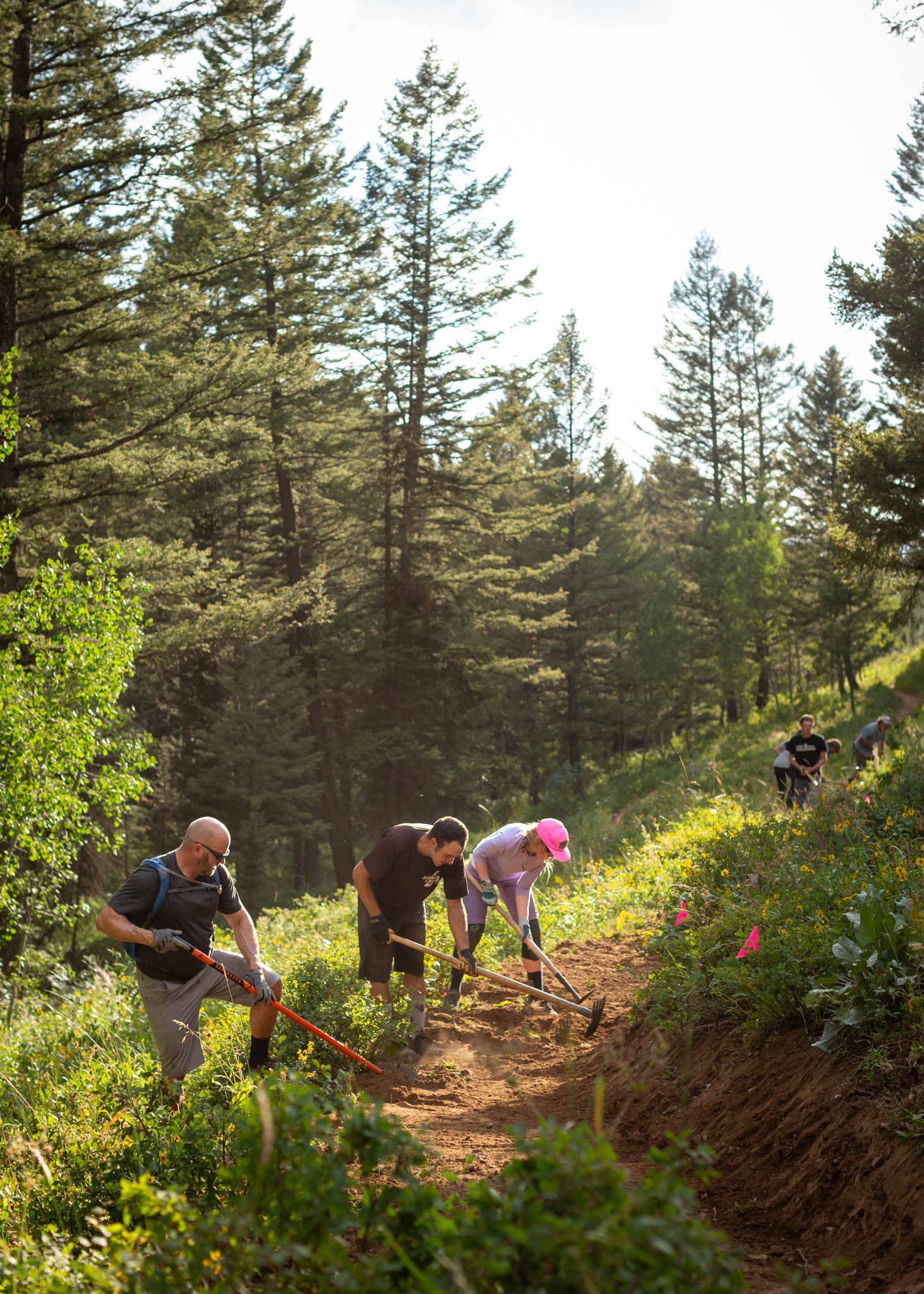Going with the Flow
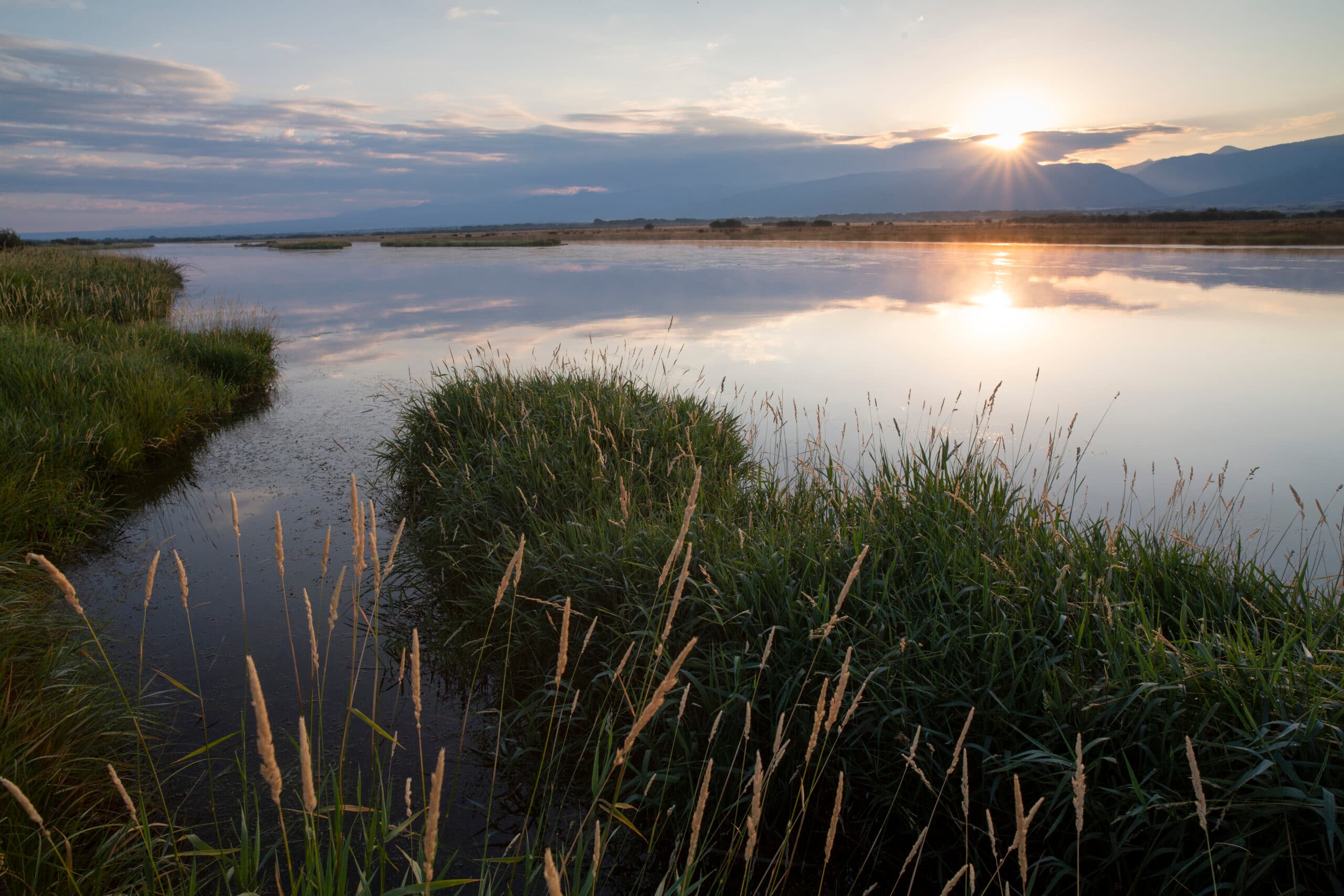
As far back as anyone can remember, there have been stories of the land and the people, and of the way life has ebbed and flowed through the valley.
These are the stories that bind us to history and, so often, to our own identity—a connection to the past and a promise of the future.
The story of Teton Creek provides the kind of tale that should be told and retold through the decades, and even centuries, as a story of brokenness and redemption, an example of shortsighted gain and long-term recovery.
“For me, Teton Creek is the story of the American West,” says Amy Verbeten, executive director of local nonprofit Friends of the Teton River. “It’s a story of how we have come to view these wild places as just resources that need to be developed, but it’s also a story that goes back even further. It’s our grandparents’ story and their grandparents’ story. It’s the story of understanding that these places we live in are natural places and that we need to live in balance with nature. Our grandparents knew that, but somewhere along the way, for many of us, the story was lost.
“It’s important that we take the time to stop and truly listen to the people in our community who have kept those stories alive for generations—the ones who still know the land and water,” she adds.
The Teton Creek and its corridor, comprising one of the most significant watersheds in the Greater Yellowstone Ecosystem, has become a focal point for local and national discussions concerning where development and environmental conservation intersect.
This unassuming tributary of the Teton River has spawned millions of dollars of funding as private and public partners have worked to repair damage to the creek sustained from unfettered development in a growing resort community. What backhoes and bulldozers broke apart, the Teton Creek Collaborative sought to heal by protecting more than 1,100 acres of land, working to redesign undeveloped subdivisions to better protect wildlife habitats, and investing millions of dollars into building back a mile of the creek using stabilizing materials and native plants.
In turn, the collaborative has set the stage for other Western communities to heed this cautionary tale and perhaps earn the kind of hope found in a conservation salvation.
Through her work at Friends of the Teton River, Verbeten is one of many who have intimately studied, explored, planned, and prepared the restoration campaign known as the Teton Creek Corridor Project, a major piece of the ongoing saga of Teton Creek. Friends of the Teton River, along with the Teton Regional Land Trust, Valley Advocates for Responsible Development, Teton Valley Trails and Pathways, and the Teton LegacyWorks Group make up the core group that has worked to reestablish what our grandparents knew from the start—that this unique and defining stretch of landscape is critical to maintaining the natural balance of the valley.
It was sometime around the 1980s that Teton Valley started feeling the first pangs of what would become severe growing pains. Land was plentiful, the ski hill named Grand Targhee above Alta, Wyoming, was growing, and generational families made room for more families and modern-day pioneers. The land was surveyed and parceled. And while we argued about property rights as we still do today, the creek sustained critical damage as developers sought to tame the watershed with bulldozers and backhoes, working to straighten, widen, and ultimately dredge the creek near the Driggs Cemetery.
Some paid the legal price for the damage, but that didn’t prevent the long-term effects of what had been done to ripple through the community. The watershed was weakened: the banks started failing, the creek water was awash with sediment, and fish and streamside vegetation started to disappear. One study conducted by the U.S. Fish and Wildlife Service found that damage to the stream channels contributed to a 95 percent decline in Yellowstone cutthroat trout numbers in the Teton River.
“The Teton Creek Corridor is one of our most important character-defining landscapes in Driggs,” says Doug Self, the Community Development Director for the City of Driggs. “And because of that, the city has chosen the corridor as a boundary for development. The water, wildlife, and landscape are its own treasure for the city and [help] define the community in which we live.”
The Teton Creek Corridor Project builds on decades of conservation work. The area in question encompasses a forty-two-square-mile stretch of Teton Creek and the surrounding corridor that makes up the waterway’s floodplain, an area prone to flooding through the centuries. Not the kind of flash flooding we often equate with the term flooding, but widespread flooding associated with stream and river beds where large amounts of runoff or precipitation increase water levels. The floodplain creates a safety net for such flooding.
The creek itself is born deep in the canyons of “the quiet side” of the Tetons, the headwaters flowing down from 6,000 feet above the Teton Valley floor. The creek rushes through Wyoming’s Teton Canyon, passing Reunion Flats, a place where the Shoshone and Bannock tribes gathered their hunting parties and where early fur trappers and mountain men met up after long winters. It’s also where the famed Hayden Survey (see A Grand Prismatic History, page 88) camped during the government-funded Western exploration of 1871—a project that would ultimately lead to the establishment of Yellowstone, the nation’s first national park.
Farther down, the creek spills across the Idaho border, cutting its way along the edges of the City of Driggs, the seat of Teton County, Idaho. Finally, it passes under State Highway 33 before coursing its way to its confluence with the Teton River (see A Fork in the River, page 62).
Arguably the most essential tributary of the Teton River, the creek also carries with it the weight of ecological and economic significance as critical habitat. It provides rare and valued spawning habitat for the Yellowstone cutthroat trout and was named as one of the top ten “Waters to Watch” in the 2009 National Fish Habitat Partnership. (Teton Valley itself remains a significant piece of the Greater Yellowstone Ecosystem through the Partners for Fish and Wildlife Strategic Plan, and within the Fish and Wildlife Service Cross Program Recovery initiative.)
Not only is the creek itself important, so is the floodplain surrounding it. This expansive, gradated landscape serves to spread excess water over a large area when the creek bed is flowing at over capacity. Flooding happens, but dangerous, fast-and-furious flash flooding is minimized by the dispersing and absorbing qualities of the floodplain. As such, the Teton Creek Corridor also becomes a major factor in keeping the public safe from natural disaster.
“People used to live close to the land,” says Verbeten. “And we shared generational stories. We lived close enough to the land to know where to build our homes and barns and where we couldn’t. These were times when people lived here longer than ten and twenty years and they knew the land. They knew where flooding had occurred, or they knew that certain areas flooded because that story was passed down to them. So, when they went to build a new home, people would know, ‘Oh, that area over there is prone to flooding and is probably not a good place to build.’
“This is the story of every stream system in the United States,” adds Verbeten. “Teton Creek is just one story of all these Western streams. We also see the Teton Creek story as being a model of what can be. At this point we can’t go back. We can’t undo all of what has happened to the creek. We need to accept what is, is. Then we move forward for the better.”
The community didn’t look back but moved ahead, first with drafting the Teton Creek Master Plan, an initiative led by Friends of the Teton River with support from the Department of Landscape, Architecture, and Environmental Planning at Utah University; the City of Driggs; and Teton County, Idaho. This master plan was incorporated into the county’s Comprehensive Plan for Development. In 2015, using that comprehensive plan as a guide, the Teton Creek Corridor Collaborative was established, and its mission set forth.
“This is an example of why good planning and vision [are] essential to the economic, social, and environmental success of a community,” says Kathy Rinaldi, who served two terms as a Teton County Commissioner and made the Teton Creek Corridor restoration a priority during her time in office.
The efforts of the group hit a big milestone last summer with the opening of Teton Creek Pathway, a two-and-a-half-mile stretch of pathway along the south side of the creek, showcasing over a thousand acres of agricultural land that’s protected through conservation easements. Additionally, more than five miles of streambeds have been stabilized to reduce flooding risks and more than thirty-five acres of land have been restored to near natural state, along with an additional thirty-seven acres of surrounding sagebrush habitat.
And the work will continue. Doug Self revealed that a grant is in the works to continue flood mitigation along the corridor, extending down through the Creekside Meadows subdivision at the south end of the City of Driggs. And the Nature Conservancy in Idaho announced in January that the group has secured a thousand acres in the heart of Driggs. The effort’s primary goal will be to build and partner with the Teton Creek Corridor Collaborative to improve streamflow in Teton Creek while preserving agricultural land around the watershed.
“Teton Creek is just the start,” says Verbeten. “This is the model of how we can reshape development patterns and take that development out of floodplains. It’s how we can protect the floodplains we have and renovate the floodplains that have been damaged. This is taking what is a liability and turning it into an amenity.”
For more information, visit teton
creekcorridor.org.
